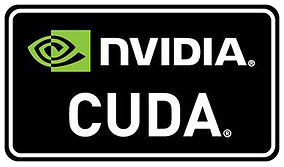

– By programmatically obtaining the kernel version $ sudo apt-get install linux-headers-$(uname -r) Check the kernel version and install kernel headers $ uname -r Warranty not even for MERCHANTABILITY or FITNESS FOR A PARTICULAR PURPOSE.Ħ. This is free software see the source for copying conditions. Check the GCC version currently installed $ gcc -version Check if the Ubuntu version is supported by CUDA toolkit. Alternatively, you can consult with the full list of CUDA-enabled graphics cards including those for notebook and workstation at. If you are using desktop, you can check against the list of desktop GPUs that I have compiled in this article. 01:00.0 VGA compatible controller: NVIDIA Corporation Device 1b06 (rev a1)Ġ1:00.1 Audio device: NVIDIA Corporation Device 10ef (rev a1)Ġ2:00.0 VGA compatible controller: NVIDIA Corporation Device 1b06 (rev a1)Ġ2:00.1 Audio device: NVIDIA Corporation Device 10ef (rev a1)Įnsure that the NVIDIA graphic card(s) support CUDA by using nvidia-smi command.

After invoking the command, you should see NVIDIA in the device list output. The command lspci is used to display the devices connected to PCI buses. Verify the GPU is CUDA capable $ lspci | grep -i nvidia You can refer to this article for NVIDIA graphics driver installation and functionality checking.ģ. Verify that NVIDIA graphics driver has been installed properly. Update apt package index and install the newest version of all currently installed packages $ sudo apt-get updateĢ. The pre-installation steps are primarily checking if the system environment is ready for Cuda toolkit installation.ġ. The driver installation is not covered in the post. Prior to the installation, ensure that you have installed NVIDIA driver for Ubuntu. You can refer to the article if you want to go straight to CUDA 9.2 instead of 9.1. Update: I have written a follow-up post about installation of CUDA 9.2. The official installation guide is available at the NVIDIA website and can be referenced when following the steps outlined in this post. If you are using Ubuntu 16.04 (Xenial) and want to install the recent release of CUDA toolkit (version 9.1), this post may help. To harness the GPU power, NVIDIA develops and provides CUDA toolkit that can be used as the development environment and libraries for GPU-accelerated applications. NVIDIA graphic cards have gained popularity among machine learning researchers and practitioners as the base hardware for GPU computing. It is not uncommon to perform computation for linear algebra, image and video processing, machine learning (especially deep learning), graph analytics, and so forth on GPU. With advances in GPU technologies, performing complex computation is not an exclusive feat of multicore CPUs anymore.


 0 kommentar(er)
0 kommentar(er)
